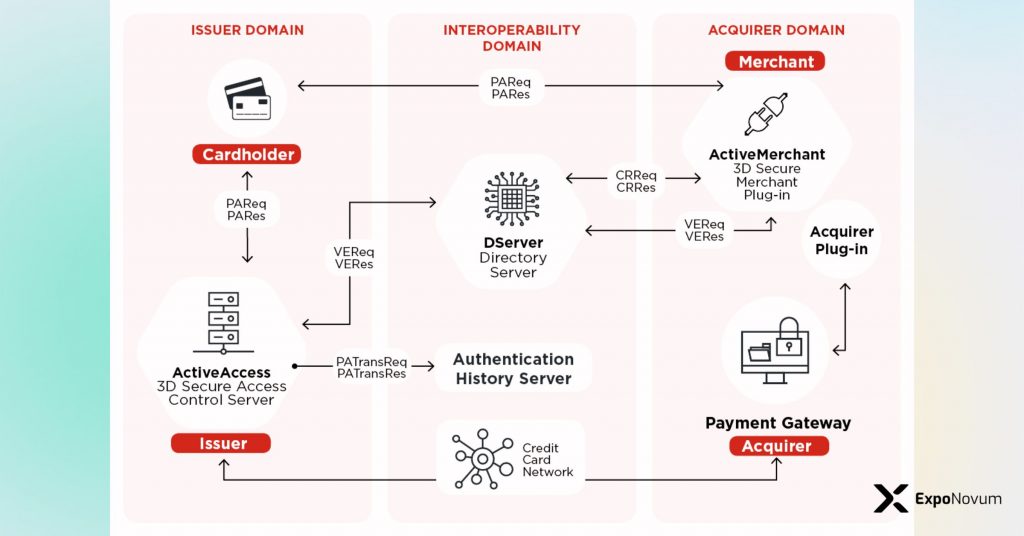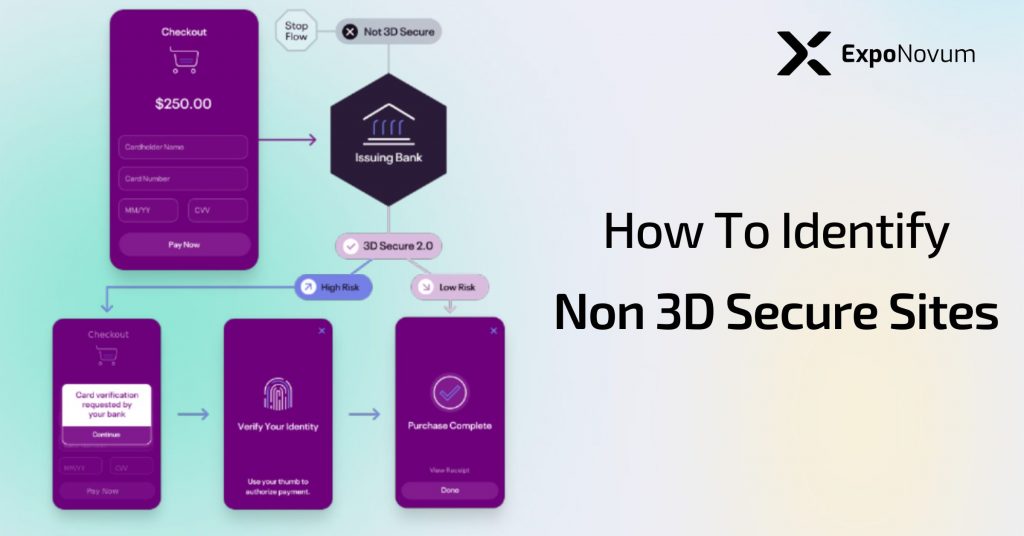3D Secure Technology
Online shopping has become a convenient and popular way to purchase goods and services, but it also comes with risks. One of the most significant risks is the potential for fraud and identity theft on non 3D Secure sites.
3D Secure technology, also known as “Verified by Visa” or “Mastercard SecureCode” is an additional layer of security added to online transactions. The shopper must enter a one-time code sent to their phone or email to complete the transaction. This added step helps ensure that the person making the purchase is the cardholder.
On the other hand, Non 3D Secure websites are online merchants that don’t use 3D Secure technology to secure their online transactions. These sites may not adhere to industry security standards and may not protect personal and financial information. It is important to understand that non 3D Secure sites are vulnerable to fraud and identity theft.
In this blog post, we will delve deeper into what non 3D Secure websites are and the risks associated with shopping on them. We will also provide examples of non 3D Secure sites and discuss why it is important to be cautious when shopping on these sites.

What is a 3d secure pin?
3D Secure PIN, also known as “Verified by Visa” or “Mastercard SecureCode” is a one-time code that is required to be entered by the cardholder to complete an online transaction. This code is typically sent to the cardholder’s phone or email as a text message or email. It serves as an additional layer of security to protect against fraud and identity theft.
The idea behind this is that only the actual cardholder will have access to the code; therefore, it would be hard for an unauthorized person to use the card for online transactions. Requiring the 3D Secure PIN helps ensure that the person making the purchase is the actual cardholder.
What are non 3D Secure sites?
This chapter will define and explain non 3D Secure websites and provide examples. A non 3D Secure site is an online merchant that does not use 3D Secure technology to secure online transactions. These sites do not require the shopper to enter a one-time code sent to their phone or email to complete the transaction. This means that there is no additional layer of security to protect personal and financial information.
Non 3D Secure sites are vulnerable to fraud and identity theft because they lack the extra security provided by 3D Secure technology. Hackers and fraudsters can easily steal personal and financial information on these sites, such as credit card numbers and personal identification numbers (PINs).
Examples of non 3D Secure websites include:
- Small online retailers.
- Independent sellers on marketplace platforms.
- Even some larger retailers still need to implement 3D Secure technology.
It’s important to note that just because a site is not 3D Secure doesn’t necessarily mean it’s not legitimate. However, it’s important to be aware of the risks of shopping on non 3D Secure sites.
It’s also important to note that not all non 3D Secure websites are created equal. Some may have basic security measures, such as SSL certificates or PCI compliance, to protect personal and financial information. However, these measures may not be as effective as 3D Secure technology in preventing fraud and identity theft.
Risks of shopping on non 3D Secure sites
Shopping on non 3D secure websites carries several risks, including:
Fraud and Identity theft
Fraud and identity theft are the most common risks associated with shopping on non 3D Secure sites. Hackers and fraudsters can easily steal personal and financial information on these sites, such as credit card numbers and personal identification numbers (PINs). This information can then be used to make unauthorized purchases or open new credit accounts in the shopper’s name.
Credit card skimming
Non-3D secure sites are more susceptible to credit card skimming, which is when fraudsters use a device to steal the information stored on a credit card’s magnetic stripe.
Phishing scams
Non-3D secure sites can be used as a platform for phishing scams, where scammers pose as a legitimate businesses to trick customers into revealing sensitive information such as passwords and credit card numbers.
Lack of Protection for Consumers
Non 3D Secure sites may not protect personal and financial information as effectively as 3D Secure websites. These sites may have different levels of encryption or other security measures to protect sensitive information. This means personal and financial information may be vulnerable to hacking and cyber-attacks.
Limited liability
In the event of fraudulent activity, customers who shop on non-3D secure sites may be held liable for any losses, while those who shop on 3D secure sites are often protected by their credit card issuer.
Decreased trust
Shopping on non-3D secure sites can decrease consumer trust in the security of online transactions, potentially deterring them from shopping online altogether.
Another risk associated with shopping on non 3D Secure sites is that these sites may need to adhere to industry security standards. For example, non 3D Secure websites may not be PCI compliant, which means they may not have the necessary security measures to protect personal and financial information.
In summary, non 3D Secure sites pose a significant risk to consumers due to the potential for fraud and identity theft. These sites may not protect personal and financial information as effectively as 3D Secure websites and may not adhere to industry security standards. It’s essential for consumers to be aware of these risks and to take steps to protect themselves when shopping on non 3D Secure sites.

How to Identify Non 3D Secure Sites
In this chapter, we will provide tips on how to identify non 3D Secure sites before entering personal or financial information. Consumers need to be able to spot non 3D Secure sites to protect themselves from the risks associated with shopping on these sites.
The first step in identifying non 3D Secure websites is to look for a secure connection. A secure connection is indicated by “HTTPS” in the website’s URL rather than just “HTTP.” The “s” in “HTTPS” stands for “secure” and indicates that the website uses SSL (Secure Socket Layer) encryption to protect personal and financial information.
Another way to identify non 3D Secure sites is to look for a secure padlock icon in the browser. This icon is usually located in the browser’s address bar and indicates that the website is using SSL encryption.
Consumers should also be aware that some browsers may indicate whether a site is secure. For example, Google Chrome displays a “Not Secure” warning in the address bar for non 3D Secure websites.
It’s also important to note that not all non 3D Secure sites will have these indicators. Some may have basic security measures, such as SSL certificates, but these measures may not be as effective as 3D Secure technology in preventing fraud and identity theft.
In summary, identifying non 3D Secure websites is essential for protecting personal and financial information when shopping online. Consumers can look for a secure connection indicated by “HTTPS” in the website’s URL and a secure padlock icon in the browser. Browsers may also indicate whether a site is secure or not. However, not all non 3D Secure sites will have these indicators, so it’s important to be aware of the risks associated with shopping on non 3D Secure websites and taking steps to protect yourself.
Bottom Line
Non 3D Secure sites pose a significant risk to consumers. Shopping on these sites may leave personal and financial information vulnerable to hacking and cyber-attacks. Consumers should be vigilant when shopping online and only use sites that are 3D Secure.
In addition to being cautious when shopping on non 3D Secure websites, consumers should also take steps to protect themselves. This can include using a credit card rather than a debit card when shopping online, monitoring bank and credit card statements for unauthorized transactions, and being wary of unsolicited emails or phone calls asking for personal and financial information.
In conclusion, non 3D Secure sites are a significant risk to consumers and should be avoided. Shopping on these sites provides an additional layer of security to protect personal and financial information. Consumers should be vigilant when shopping online and take steps to protect themselves from the risks associated with non 3D Secure sites.